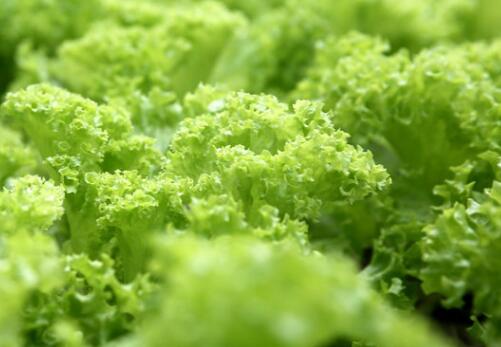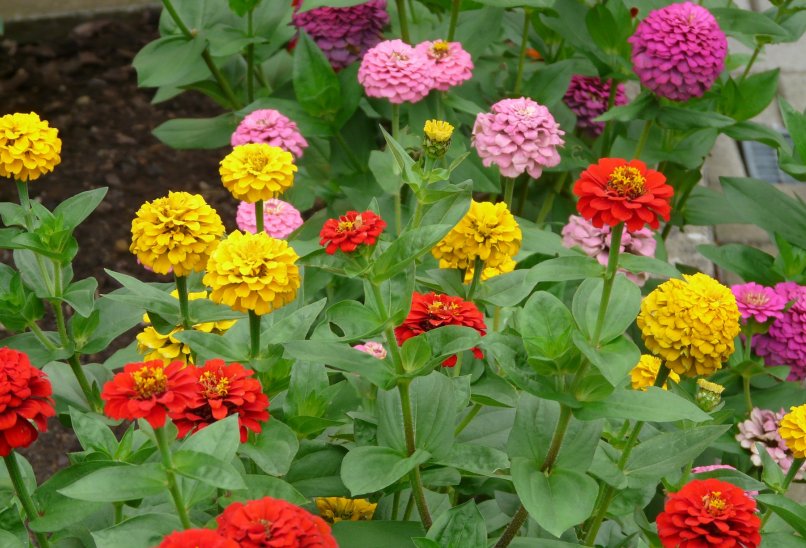Introduction of culture methods and matters needing attention of "anti-radiation plant" tortoise back bamboo!
Tortoise back bamboo is also called iron silk orchid. Not only its appearance is quite elegant and elegant, its leaves are sparse and beautiful, but it is also a kind of plant with anti-radiation effect, so it is liked by many people and wants to raise it. So the editor will introduce to you the breeding methods and points for attention of the tortoise back bamboo.

First, the culture method of tortoise back bamboo
1. Soil
Tortoise back bamboo is suitable for survival in loose, fertile and well-drained soil, which can be mixed with rotten leaf soil, vegetable garden soil and sandy soil according to the proportion of 1 to 3. In addition, some hooves and broken bones can be put as base fertilizer at the bottom of the basin before releasing.
2. Sunshine
Tortoise back bamboo is suitable for survival under the condition of sufficient light, but it can not be exposed to strong sunlight, so as not to burn the leaves, but the light should not be too dark so as to dilute the color of the leaves. It can be placed under the condition of scattered light in daily life, and the flowerpot can be placed in the backlight of the window in summer, but sufficient sunshine is needed in winter.
3. Temperature
Phyllostachys pubescens is suitable for living in warm conditions, and is not very cold-resistant, and the most suitable temperature for its growth is about 15-25 ℃. When the winter temperature is lower than 5 ℃, it should be moved indoors to avoid frostbite, and the indoor temperature should be maintained between 15-20 ℃.
4. Moisture
Tortoise back bamboo is suitable for survival in wet conditions, but the soil can not accumulate water to prevent rotting roots, and it is best to keep it dry without cracking and moistening. 60% of the air humidity is suitable, and the leaves should be sprayed with water every day in summer. It is not necessary in winter to avoid black spots or even blackening and rot on the leaves.
5. Fertilization
The period from April to September is the prosperous period for the growth of Phyllostachys pubescens. In order to provide it with nutrition, it is necessary to apply dilute liquid fertilizer every half a month or so, and irrigate 28% or 30% of nitrogen liquid fertilizer once in 14 days during the growing period, which can promote the plant to be strong. In order to make the stem stronger and avoid lodging, additional phosphorus and potassium fertilizer can be applied after autumn.
6. Pruning
After the setting of the tortoise back bamboo, in order to achieve natural beauty, the whole plant can be pruned properly where the stem node leaves grow too dense and the branches grow too long, and if you want the stem vines to grow rapidly, you can appropriately trim the aged leaves in the lower part.
7. Diseases and insects
Phyllostachys pubescens is easy to suffer from diseases and insect pests during its growth, and the main common disease is gray spot. The control measures can be sprayed with 1000 times of topiramine or 0.5% Bordeaux solution, and plant maintenance should be strengthened. The common pests are mainly shell insects. Control measures can be sprayed with 1000 times of omethoate emulsion.
8. Change the basin
Tortoise back bamboo is a fast-growing plant. In order to provide sufficient space for its growth, it is necessary to change the basin once a year. The best time to change the pot is between March and April, and part of the old soil and withered roots can be removed before changing into a larger one.
2. Matters needing attention in culturing tortoise back bamboo
1. Pay attention to the use of slightly acidic soil during the cultivation of tortoise back bamboo. If there is no condition to configure loose and fertile soil and good drainage and water retention soil, rotten leaf soil or peat soil can also be used directly.
2. The most suitable temperature for the growth of Phyllostachys pubescens is between 20 and 25 ℃. It should be noted that the night temperature in winter during the seedling period should not be lower than 10 ℃ to avoid frostbite.
3. The growth period of tortoise back bamboo is the period of rapid plant growth, and the cultivation space needs to be a little more spacious so as not to affect the extension of stems and leaves, resulting in unbeautiful leaf shape.
4. it is necessary to spray water and maintain high air humidity in summer, and the leaves need to be kept clean, which is beneficial to photosynthesis.
5. Tortoise back bamboo has a certain toxicity, especially its juice has a stimulating and corrosive effect, if its juice is rubbed into the eyes or comes into contact with the wound, it will cause unnecessary pain and burns, and can not be eaten by mistake, otherwise it will burn the tongue, so we should pay attention to it during culture.
Summary: the above is about the breeding methods of tortoise back bamboo and matters needing attention related to the introduction, I hope to help friends in need!
Time: 2019-03-13 Click:
- Prev

When will the lettuce be sown? What are the main points of planting methods in greenhouse?
Lettuce is one of our common vegetables, there are many ways to eat, stir-fried, hot pot ingredients, hamburger vegetables are good choices. As a green vegetable, lettuce has rich nutritional value, tastes crisp and is loved by many people. In addition, there are some people who use lettuce to grow potted vegetables.
- Next

How to grow zinzagrass from Mexico?
Zinnia is a plant native to Mexico. Later, he flourished in China. Is used as a variety of horticultural ornaments. After all, it's beautiful. Today, the editor will talk to you about the planting methods of zinnia. Let's take a look at the planting method of zinnia.
Related
- Fuxing push coffee new agricultural production and marketing class: lack of small-scale processing plants
- Jujube rice field leisure farm deep ploughing Yilan for five years to create a space for organic food and play
- Nongyu Farm-A trial of organic papaya for brave women with advanced technology
- Four points for attention in the prevention and control of diseases and insect pests of edible fungi
- How to add nutrient solution to Edible Fungi
- Is there any good way to control edible fungus mites?
- Open Inoculation Technology of Edible Fungi
- Is there any clever way to use fertilizer for edible fungus in winter?
- What agents are used to kill the pathogens of edible fungi in the mushroom shed?
- Rapid drying of Edible Fungi

